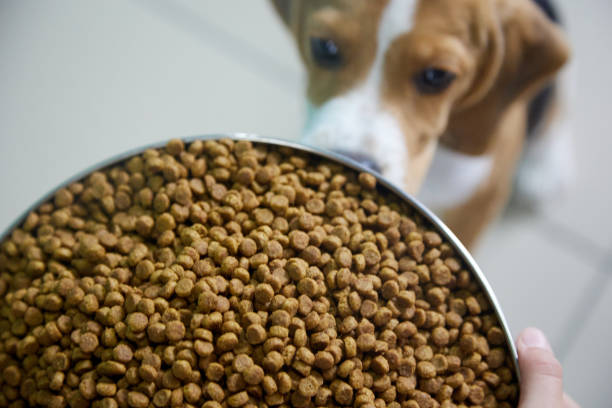Raw vs. Cooked Dog Food: Which Is Better for Your Dog
Table of Contents
Introduction
When it comes to feeding your dog, one of the biggest decisions you’ll face is choosing between a raw or cooked diet. Each option has its advocates, with raw dog food enthusiasts claiming it’s more natural, while supporters of cooked food emphasize safety and digestibility. But which one is truly better for your dog’s health? In this post, we’ll explore the pros and cons of both raw and cooked dog food to help you make an informed decision for your furry friend.
Raw Dog Food vs. Cooked Dog Food: A Comparison
Both raw and cooked diets have benefits and risks, and the best choice depends on your dog’s health, lifestyle, and individual needs. Let’s compare both options to see how they stack up.
Raw Dog Food
Raw dog food typically consists of uncooked meat, bones, organs, and sometimes fruits and vegetables. It mimics what dogs might eat in the wild, which is why many owners believe it’s a more natural choice.
Benefits:
- Natural Diet: Raw diets aim to replicate what dogs would eat in the wild, providing them with natural nutrients that haven’t been altered by cooking.
- Shinier Coat: Many owners report that raw-fed dogs have shinier coats and healthier skin due to the higher content of healthy fats in raw meat.
- Improved Dental Health: Chewing on raw bones can help clean your dog’s teeth and reduce plaque buildup.
Risks:
- Bacterial Contamination: Raw meat can carry harmful bacteria like Salmonella or E. coli, which could make both your dog and your family sick if not handled properly.
- Nutritional Imbalance: It’s challenging to provide a balanced raw diet without careful planning, which can lead to deficiencies in essential vitamins and minerals.
- Choking Hazard: Bones, especially if they’re too hard or large, can pose a choking risk or cause internal blockages.
Cooked Dog Food
Cooked dog food involves preparing your dog’s meals using cooked meats, grains, and vegetables, similar to what humans eat. Some owners prefer cooked diets because they are safer and easier to digest.
Benefits:
- Safer to Handle: Cooking meat reduces the risk of bacterial contamination, making it safer for both your dog and your family.
- Easier Digestion: Cooking makes some foods, like grains and vegetables, easier for dogs to digest, which can be beneficial for dogs with sensitive stomachs.
- Customizable Diet: A cooked diet allows you to tailor your dog’s meals to their specific dietary needs, such as low-fat or grain-free diets.
Risks:
- Loss of Nutrients: Cooking can destroy some of the natural nutrients in food, such as certain vitamins and enzymes, meaning you’ll need to ensure the diet is still nutritionally balanced.
- Time-Consuming: Preparing cooked dog food can be more time-consuming than simply feeding raw meat or commercial dog food.
Benefits and Risks of Each Type
While both raw and cooked diets have their advantages, they also come with potential risks. Here’s a more detailed look at the benefits and risks of each:
Benefits of Raw Dog Food:
- Promotes a natural diet and mimics wild eating habits.
- May improve coat health and dental hygiene.
- Contains unaltered, natural nutrients.
Risks of Raw Dog Food:
- Potential exposure to harmful bacteria.
- Risk of choking or dental fractures from bones.
- Difficult to balance nutrients without proper knowledge.
Benefits of Cooked Dog Food:
- Safer to handle and prepare.
- Easier for dogs with sensitive stomachs to digest.
- Allows for greater control over your dog’s nutrition.
Risks of Cooked Dog Food:
- Loss of some nutrients during cooking.
- Requires more time to prepare.
- May require supplements to ensure nutritional balance.
Tips for Choosing the Best Diet for Your Dog
Selecting the right diet for your dog requires careful consideration of their unique needs. Here are a few tips to help you decide whether raw or cooked food is best:
- Consult Your Vet: Always consult with your veterinarian before making any major changes to your dog’s diet. They can help you understand your dog’s specific nutritional needs.
- Consider Your Dog’s Health: If your dog has a sensitive stomach or is prone to certain health issues, a cooked diet may be easier for them to digest. However, some dogs may thrive on a raw diet if introduced properly.
- Balance is Key: Whether you choose raw or cooked food, make sure your dog’s meals are balanced with the right proportions of protein, fat, vitamins, and minerals.
- Food Safety: If you opt for raw food, take extra precautions when handling and storing it to avoid bacterial contamination. Always source high-quality, fresh meat.
- Observe Your Dog: Every dog is different, so pay attention to how your dog reacts to their diet. If they show signs of improved health, energy, and coat condition, you’re likely on the right track.
Conclusion
There’s no one-size-fits-all answer when it comes to feeding your dog raw or cooked food. Both diets have their merits, and the best choice will depend on your dog’s health, lifestyle, and personal preferences. Whether you go with raw, cooked, or a combination of both, the most important thing is to provide a balanced, nutritious diet that meets your dog’s needs. Always consult with your vet before making any dietary changes, and ensure you’re feeding your dog a diet that will keep them healthy and happy for years to come.



